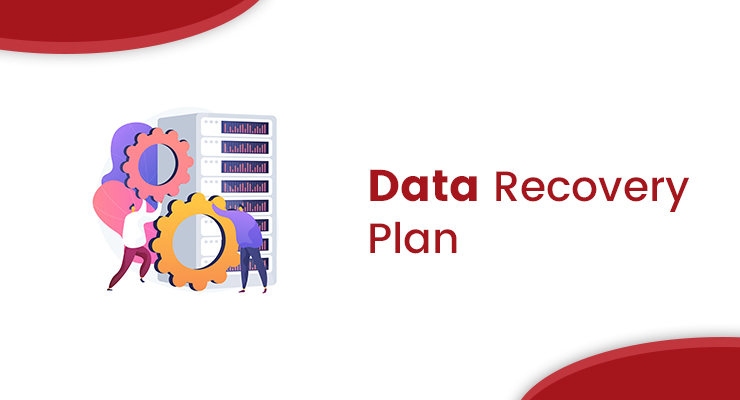Data recovery plan is very important as companies rely more on computers and electronic data for their day-to-day activities, the volume of data and information technology resources lost to disasters continues to be growing. Organizations are expected to reduce income and incur costs per year due to crises, unpreparedness, and lack of inefficiency.
One way the organization can minimize losses and defend itself from disasters is to establish and execute a disaster recovery plan (DATA RECOVERY PLAN). Organizations should establish a disaster response strategy that will handle some form of disaster.
Typical aspects of the disaster response strategy include the following:
1. Establish a Specialized team or IT Service provider for emergency relief –
The team will be responsible for the production, deployment, and management of the DATA RECOVERY PLAN. Planning a DR plan is highly systematic and requires experience and professionalism. The whole cycle includes DR testing too and after that management of the entire DR strategy from time to time.
2. Identify and evaluate the risks of disasters –
Your management staff should identify and evaluate your organization’s risks. This move should include things relating to natural disasters, man-made crises, and technology-related accidents. It will allow the team to define the mitigation plans and services needed to recover from disasters within a predetermined and appropriate timeline.
3. Identify vital applications, documentation, and tools:
The organization must review its business processes in order to decide which processes are essential or mission-critical to the organization’s operations. The strategy should concentrate on short-term survival, such as the production of cash flows and sales, rather than on a long-term approach to recover the complete operation of the company.
4. Specify the protocols for backup and off-site storage –
These protocols should identify when to back up, by whom, how, and when to backup, and how often backups can occur. Both essential software, facilities, and documentation should be sponsored. The papers that you should be endorsing are the new accounting statements, tax accounts, the complete roster of employees and their contact numbers, inventory reports, customer, and vendor listings. Important materials needed for day-to-day activities should be kept at an off-site venue.
5. Check and keep the DATA RECOVERY PLAN-
Disaster recovery planning is an ongoing process when the threats of incidents and crises are continuously evolving. It is recommended that the company regularly test the DATA RECOVERY PLAN to assess the protocols documented in Plan. The recovery team should periodically update the DATA RECOVERY PLAN to incorporate improvements in business practices, technologies, and evolving catastrophe threats.
To summarize, the organization must create a response team to develop a disaster recovery strategy that involves defining and evaluating disaster risks, defining sensitive applications, and determining backup procedures. The DATA RECOVERY PLAN should be regularly tested and maintained to ensure that the organization is consistently prepared for emerging crises and emergencies.
Pulse Tech excels in business continuity and our Disaster Recovery plans are designed to match your intended downtime time which you can afford in a worst-case scenario. Our 100% Canadian Data Center combined with other backup methods will help you reduce the risks and keep your business safe.


